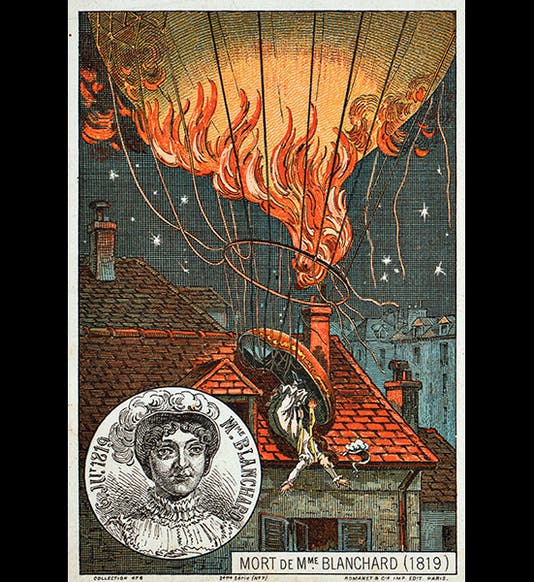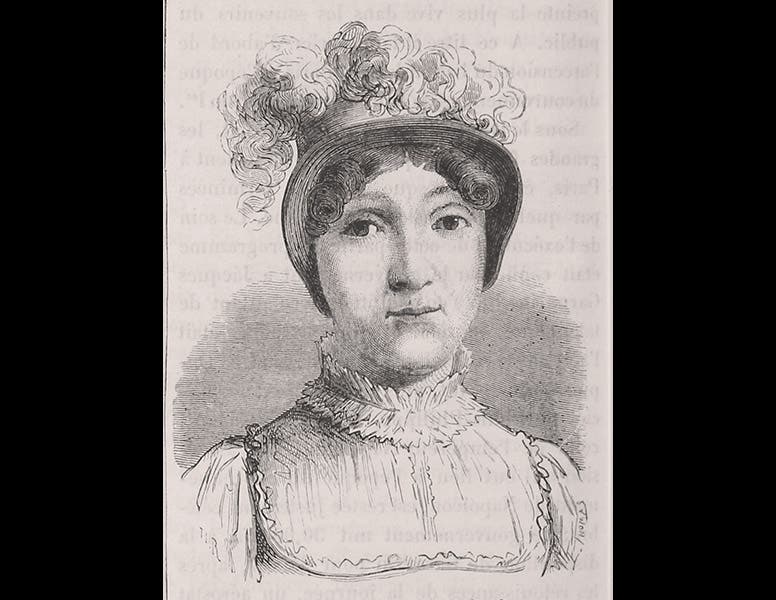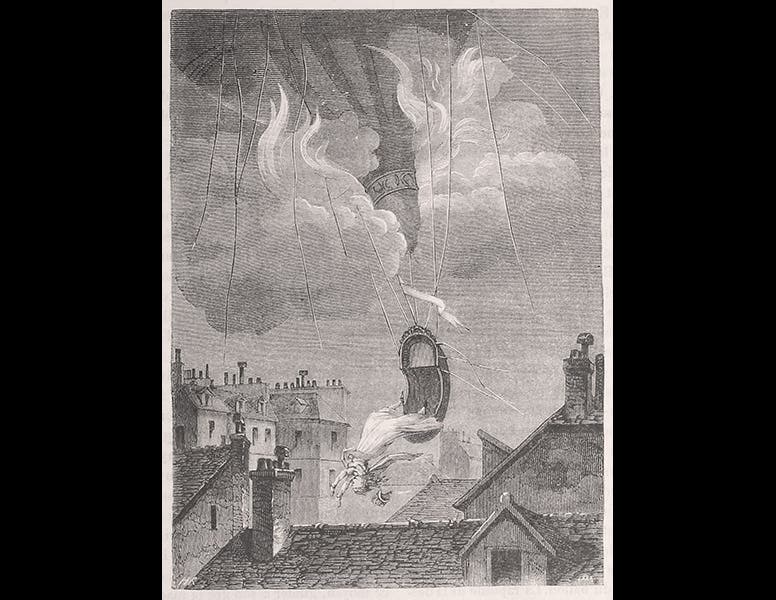Scientist of the Day - Sophie Blanchard
Sophie Blanchard, a French balloonist, died July 6, 1819, at the age of 41. Had we posted a Scientist of the Day on July 4, we might have honored Jean-Pierre Blanchard, born on that day in 1753, who was one of the very first balloonists in the heady days of 1783 and the Montgolfier brothers, and who made the first crossing ever of the English Channel in 1785, in a hydrogen (not a hot-air) balloon. He married Sophie in 1804 and she made many balloon flights with him.
When Jean-Pierre suffered a heart attack in 1808 and fell from his balloon, dying from his injuries in 1809, Sophie decided to carry on alone, making more than 60 ascents over the next ten years. She specialized in night flights, and she attracted the favorable attention of both Napoleon and King Louis XVIII, two enemies that it was not easy for one person to please. It is not surprising, given the hazards of her profession (hydrogen balloons were highly flammable), that Sophie met her end in a balloon, or, more accurately, just out of one. On this day in 1819, she took part in a festival in Paris that involved setting off fireworks from her balloon while aloft, which was not the best of ideas. One of the rockets went astray, punctured the balloon, and set it afire. The flaming balloon slowly lost its lifting capacity and descended over the rooftops of Paris. When the gondola struck a rooftree, Sophie was pitched out of the nacelle and fell to her death.
Louis Figuier’s Les merveilles de la science (1867), which we drew on just yesterday for our notice on the lamp inventor Ami Argand, provides two of our illustrations today (and a dramatic textual account of Sophie’s death). The first image, depicting Sophie’s demise in color, is from a tea card (ca. 1895) from a collection in the Library of Congress.
Dr. William B. Ashworth, Jr., Consultant for the History of Science, Linda Hall Library and Associate Professor, Department of History, University of Missouri-Kansas City. Comments or corrections are welcome; please direct to ashworthw@umkc.edu.









